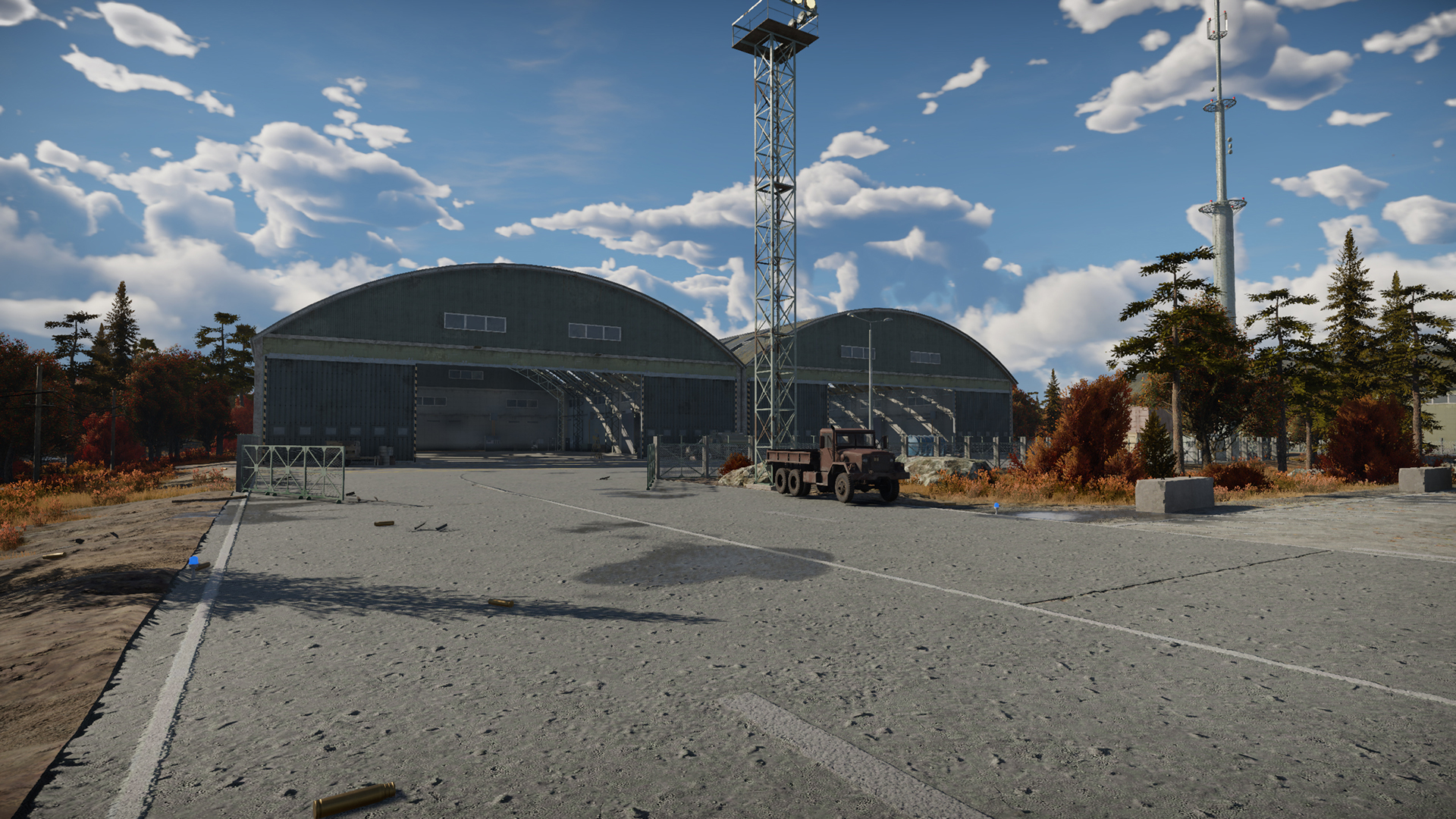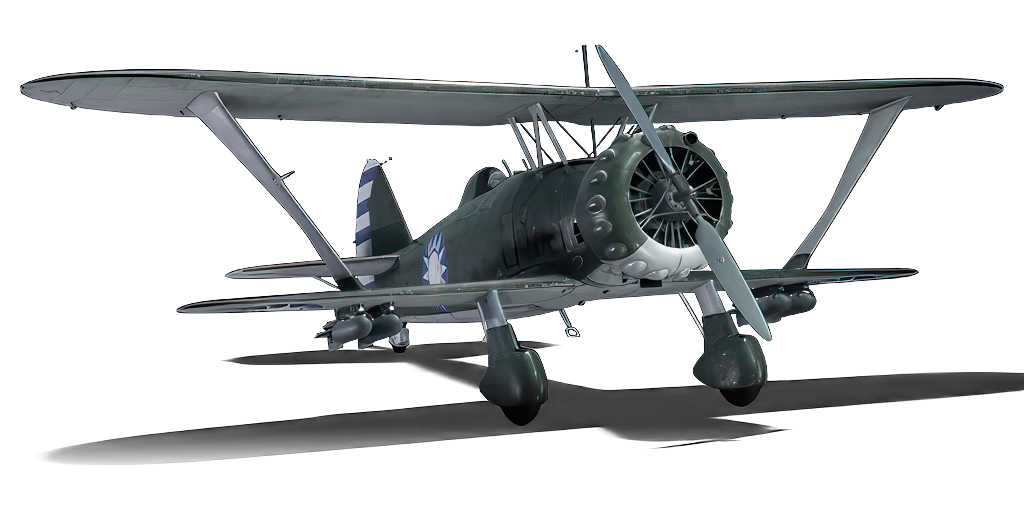␗Hs 123 A-1
阅读
2024-05-20更新
最新编辑:yusui-
阅读:
更新日期:2024-05-20
最新编辑:yusui-
本条目介绍的是中国螺旋桨轰炸机 Hs 123 A-1 (中国) 。 关于其他版本,请参阅Hs 123 A-1。
警告:显示的标题“␗Hs 123 A-1”重写了此前显示的标题“亨舍尔 Hs 123 A-1 (中国)”。
介绍
␗Hs 123 A-1是中国的 I 级俯冲轰炸机,分房权重 1.0/1.0/1.3 (街机/历史/全真),它于版本更新1.91“夜视”加入游戏。
基本信息
飞行性能
最大速度
在 4000 米 310 千米/时
回转时间 15 秒 秒
实用升限 8000 米 米
爬升率 米/秒
引擎 BM 132A
类型 星型,9 缸
冷却方式 气冷
起飞重量 2 吨 吨
| 项目 | 最大速度 (千米/时,于 4000 米) |
实用升限 (米) |
回转时间 (秒) |
爬升率 (米/秒) |
起飞距离 (米) | |||
|---|---|---|---|---|---|---|---|---|
| 街机 | 历史/全真 | 街机 | 历史/全真 | 街机 | 历史/全真 | |||
| 白板 | 293 | 288 | 8000 | 15.8 | 16.5 | 8.1 | 8.1 | 294 |
| 完全体 | 325 | 310 | 14.4 | 15.0 | 16.8 | 12.0 | ||
详情
| 部件 | |||||
|---|---|---|---|---|---|
| 作战档位 | 起飞档位 | 着陆档位 | 扰流板(减速板) | 舰载机尾钩 | 减速伞 |
| 机体限制 | ||||||
|---|---|---|---|---|---|---|
| 机翼(km/h) | 起落架(km/h) | 襟翼(km/h) | 最大过载 | |||
| 作战 | 起飞 | 着陆 | + | - | ||
| 577 | 590 | 300 | 274 | 190 | ~13 | ~8 |
| 最佳速度 (km/h) | |||
|---|---|---|---|
| 副翼 | 方向舵 | 升降舵 | 散热器 |
| < 220 | < 220 | < 380 | > 270 |
生存性和防护
成员数量 1
解体速度
机体 577 千米/时
起落架 590 千米/时
与大多数一战即二战初期设计的双翼飞机一样,Hs 123 A-1 没有装甲为飞行员及其关键部件 (发动机,非自密封油箱,油冷却系统) 提供保护,因此生存能力取决于乘员组技能。作为一个金属框架,布覆盖的结构,没有自密封油箱,通用弹和穿甲弹不会对它造成很大的伤害 (除非它们直接击中飞行员),但它的油箱或覆盖本身的布很容易被燃烧弹、曳光弹点燃。
改装件和经济
最高维修费 白板 → 完全体
街机 105 → 131
历史 150 → 187
全真 189 → 236
改装件总成本 2960
890
护身符 190
成员组培训费 200
专家 1000
王牌 20
王牌(研发点) 9 6000
战斗收益 街机 / 历史 / 全真
20% / 30% / 50%
100% / 100% / 100%
载具武备
攻击武器
弹药 1000 发
射速 1200 发/分钟
预设挂载
| 该机无自定义挂载选项。 |
| 挂载表格 | |||||
|---|---|---|---|---|---|
| 1 | 2 | 3 | 4 | 5 | |
| 对地面目标 | |||||
| SC50 ×4 SC250 ×1 |
|||||
| SC50 ×4 | |||||
载具攻略
Being a dive-bomber, its main role is rather self-explanatory. However, its frontal armament makes it feasible to be used in a fighter role, especially after dropping its bombs, which leaves a lighter and in consequence faster and more manoeuvrable plane.
In AB, the Hs 123 is a ground attacker/emergency fighter. Use your bomb load and guns to dispatch as many ground targets as possible, while making sure to keep the enemy off of your six. If someone does get on your six, pull a snap turn and keep him from getting a good shot on you for as long as possible. If you can't get onto his six you'll have to hope help arrives soon.
In air RB, the tactics change massively. Use your bomber spawn to stay above the enemy team, and dive only after the enemy fighters have passed below you. Hit their tanks and other targets with your bombs through either dive bombing or low level bombing (set a 2 second fuse then fly as low as you can, dropping just before you lose sight of the target). After your bomb load is exhausted, engage soft targets for a while. If there are none it's time that you kill some of the enemy team, begin to climb and look for damaged fighters/attackers returning to their airfield, then pounce on them. Your 7.92 mm machine guns are good, but be sure to aim for wings, as most aircraft you'll face will likely be able to absorb most of the MG bullets you put into their fuselage.
The Stealth belt is recommended for ground attack, being made up of Armour Piercing and Incendiary rounds, while Tracers are better suited for air targets (being Armour Piercing and Incendiary thanks to its Tracer component).
In tank RB, the Hs 123 has huge potentials but often depends on the pilot's bomb-dropping skills and the enemy vehicles. Your bombload is fantastic for a plane at this BR, making you a great ground attacker in tank RB. The 4 x 50 kg bombs drop first in groups of 2, so use them for light vehicles or SPAAs. If the target tank has no armour (e.g. GAZ-AA, FlakPz I, etc), only drop one group of 50 kg bombs, whereas if they are light / armoured tanks, drop the two groups together. Then the single 250 kg can destroy anything and will be much easier to aim thanks to its larger fragment range. Note that you need to lead more for both 50 kg & 250 kg bombs, as the Hs 123 is quite slow, resulting in a lower momentum for the bombs comparing to later planes. Also, if tracer shells start to come near you as you dive, immediately pull off or dodge. The Hs 123 is very fragile, with its wing easily ripped off by a few bullets and the pilot easily sniped. The large radial engine is also prone to taking damage. After all the bombs are gone, you can start looking for incoming enemy planes. You have a good chance of out turning most planes with your combat / takeoff flaps down, so lure them into turn fights when possible.
In simulator, the Hs 123 is quite a decent multi-role plane to fly. It has great visibility towards the lower sides meaning it is easy to search for ground targets, its over-the-nose visibility is also decent. The upper front view is obstructed by the upper wing, and the rear view is blocked by the razorback design, as a result you cannot see what is on your tail. Its control handling is great at all speeds, making it a rather stable platform for ground pounding and an easy plane to take off and land in. It can perform base bombing, ground pounding and dogfighting. Bring the least fuel if you know that your targets are not far away, otherwise bring at least 30 minutes of fuel for prolonged patrolling and fighting. Note that you want to use 85-90% throttle as the oil easily overheats with either WEP or 100% throttle, so save the WEP for emergency manoeuvres.
For base bombing, it is recommended to fly at treetop level to get to the base as soon as possible since the Hs 123 is quite slow. When approaching the base, make sure that you are flying to its side so it can be seen from your side window and not get blocked by the nose. Once you see it, dive at it at a shallow angle. When the gunsight slices past the furthest edge of the base, release all the bombs, bank towards a nearby airfield and head back.
For ground pounding with bombs, look for tanks and pillboxes. First you need some separation between you and the target so you have enough time to smooth the aim. Dive at the target at a rather shallow angle, and release the 50 kg bombs when you are very close with gunsight above the target. Release the 250 kg when the gunsight is well above the target. Note: don't forget to set a fuse for at least 2 seconds since you are dropping bombs very low. If you only use the MGs, your targets are trucks, AAA and howitzers. Dive at it and stabilise the plane so the gunsight stays overall still at the target. Then, once the target fills out around 1/6 of the gunsight, open fire. If your aim is accurate you can destroy one target in a single pass. However, each MG only has 500 rounds and their rate of fire is pretty fast, so control the trigger to save some ammo for any unexpected dogfights.
For dogfighting, it is better to engage with an altitude advantage. Track the opponent using lead or pure pursuit, as with lag pursuit you will end up at the 6 of the target aircraft whose fuselage will soak up most of your bullets. With a reflector sight and decent visibility over the nose, the aim should be easy. Target their wings or the nose and avoid the back half of the fuselage as there is usually nothing in there. You can turn with most planes, even with the infamous I-15, with your combat / takeoff flaps deployed. However, if you see a plane with an I-15's short and fat fuselage, a flat radial engine and triangular stabilisers located right after the low-mounted mono wings, consider disengaging. The I-16 is faster than you, turns equally well and can cripple your fragile Hs 123 even with 2 x MGs. If an I-16 is on your tail, a tactic to counter it is to utilise your stableness. Deflect both your ailerons and elevators for around 70% to get into a barrel roll. If the I-16 is to follow and cut inside your roll, it is super likely to enter a flatspin due to its unstableness in manoeuvres. Perform the barrel roll tighter and tighter until the I-16 loses control and spins, then turn around and shoot. Or, simple do flat turns but turn tightly, a tight-turning I-16 is also prone to enter flatspins, however this is at risk of getting shot before it loses control.
Landing is easy thanks to the low stall speed and lovely handling. Line up and approach the airstrip at treetop, decrease speed to at most 210 km/h and deploy combat, takeoff and landing flaps in order. The touchdown speed should be no more than 140 km/h to avoid bouncing up. Release brakes immediately as soon as the nose starts dipping down to avoid propeller strike.
手动发动机控制
| 手动发动机控制要素 | ||||||
|---|---|---|---|---|---|---|
| 油气混合比 | 桨距 | 散热器 | 增压器 | 涡轮增压器 | ||
| 滑油散热器 | 散热器 | 类型 | ||||
| 可手动控制 | 不可控制 不可自动控制 |
不可控制 不可自动控制 |
不可控制 不可自动控制 |
混合控制 | 不可控制 一档增压 |
不可控制 |
优缺点
优点:
- 机动性非常好
- 挂弹质量比较大,高达 450 千克
- 投弹后可作为战斗机使用
- 空出
缺点:
载具历史
研制历史
- 亨舍尔 Hs 123 V1
Hs 123 V1 于1935年4月首飞。这架飞机采用翼半式布局、固定式起落架、开放式座舱和全金属尾翼,配备752马力的 BMW 132 发动机。驾驶舱向后倾斜,提供了良好的上下视野。机翼部分及舵面由织物制成,通过一个宽支柱连接到较小的下翼,上翼配有副翼,下翼配有襟翼。它的一个显著特点是配备 NACA 式整流罩。由于没有发动机制动器,发动机在俯冲过程中很容易转速过高,因此俯冲角度限制为70°。6月这架飞机杯转移到雷希林进行测试,直至次年1月。测试人员还发现发动机尾气会通过控制杆的缝隙进入驾驶舱。
- 亨舍尔 Hs 123 V2
第二架原型机 Hs 123 V2 于1935年6月15日首飞,并进行了广泛的工厂验收测试。这架飞机由一台770马力的莱特 旋风 GR-1820-F52 星型发动机提供动力,并配备了一个独特的新 NACA 引擎盖,气缸盖上有凹槽。1936年秋,这架原型机在一次着陆时翻倒并严重损坏。在维修过程中,这架飞机换装了 BMW 132 发动机,此后被称为 Hs 123 V8。
- 亨舍尔 Hs 123 V3
Hs 123 V3 于 1935年5月首飞,并在雷希林进行了测试,直至1936年8月。这架飞机配备了 Revi C/12A 瞄准具,用于投掷安装在机翼下方的四枚50千克炸弹。 1936年6月,这架飞机在一次着陆中严重受损,然后在雷希林拆除并修理。1937年4月,这架飞机坠毁,支柱和上翼丢失,一名试飞员牺牲。
- 亨舍尔 Hs 123 V4
Hs 123 V4 是未来量产型号的原型机。该机配备了 BMW 132A 发动机,配备了 So II 系统,该系统由十个炸弹弹匣组成,这些弹匣垂直安装在机身中,可以容纳 SC 10 集束炸弹。然而,炸弹弹匣并没有证明实用。因此,该机换装了 So III 系统,可以在机翼下成对地放置两枚50千克的炸弹。经过测试,这架飞机在1936年9月被移交给德国空军。
- 亨舍尔 Hs 123 V5
Hs 123 V5 实际上是一架 Hs 123 A-1。最初这架飞机将由一台容克斯 Jumo 210C 发动机提供动力,然后换装了 BMW 132G 发动机。此外,该飞机还配备了冷却表面积为4平方米 (而不是通常的1.3平方米) 的油冷却器和容克斯-汉密尔顿三叶可控螺距螺旋桨。1937年8月,发动机换装为 BMW 132 K V 109,可产生960马力。1939年1月,进过广泛的测试,这型飞机被移交给德国空军。
- 亨舍尔 Hs 123 V6
Hs 123 V6 也是 A-1 系列的生产机器。它最初由容克斯 Jumo 210C 提供动力,然后换装 BMW 132F。然而,就像 V5 一样,决定用马力更大的 BMW 132K 发动机提供动力。桨叶因此使用蒂森克虏伯生产的三叶可控螺距螺旋桨。这架飞机测试了各种炸弹载荷和一个更大的内置油箱,以及在下翼增添两门 MG 17 机枪。此外,驾驶舱还配备了座舱盖。试验于1939年1月结束。
- 亨舍尔 Hs 123 V7
为了测试 BMW 132K 星型发动机,帝国航空部要求制造第七架原型机。这架飞机也装备了两挺 MG 17。1938年春,发动机换装为 BMW 132 K V 110。1938年9月,经过广泛的测试,这架飞机被德国空军接管。
- 亨舍尔 Hs 123 V8
以前是 Hs 123 V2,现在是 BMW 132A-3 发动机作为 A-1 系列的前身。这台机器有一个标准的引擎盖,上面有典型的气缸凹痕。这架飞机于1937年8月移交给德国空军。
- 亨舍尔 Hs 123 A-0
在 Hs 123 V4 的基础上,A-0 系列的工作于1935年3月开始。1936年7月至1937年1月期间,在柏林舍讷费尔德机场共建造了16架。这些飞机随后被用于军事测试。
- 亨舍尔 Hs 123 A-1
亨舍尔 Hs 123 A-1的生产在1936年1月开始,第一架这种类型的飞机在1936年9月交付给德国空军。由于机身在俯冲过程中承受了过度的压力,所有在1937年4月之前交付的飞机都回厂加固。生产的229架飞机中有12架卖给了中国。
162 I.斯图卡俯冲轰炸机中队是第一个装备 Hs 123 A-1 的德国空军单位。1935年3月,德国空军的第10中队和第50中队装备了 Hs 123 A-1。总共有5个德国空军战斗机群装备了 Hs 123 A。直到波兰战役开始,只有第二军团留下来。2号学校。其余的被分配给训练单位。在战争的最初几年,这种飞机证明了它们作为前线攻击机的价值。
- 亨舍尔 Hs C- 系列
这个版本的 Hs 123 基于V6原型机,配备了 BMW 132J 星型发动机和座舱盖,不再生产。
二十世纪三十年代,美国成功地进行了俯冲战斗机的开发和试验,这些引起了纳粹德国帝国航空部技术办公室的极大兴趣。然而,开发部门负责人沃尔夫拉姆·冯·里希霍芬 (Wolfram von Richthofen) 断然拒绝了俯冲轰炸机的概念。三十年代初期,恩斯特·乌德特 (Ernst Udet) 在美国观看了柯蒂斯-莱特公司的 霍克 II 的俯冲表演,德国国防军空军资助其购买两架自用,条件是交付后能够进行详细研究。1934年2月,亨舍尔公司在没有正式招标的情况下开始开发 Hs 123 战斗机/俯冲轰炸机。1934年6月,原型机建造完成。1935年4月,第一架原型机 Hs 123 V-1 首飞。与此同时,由于水平轰炸机的命中效果自始至终不尽人意和恩斯特·乌德特的不断敦促,帝国航空部对俯冲轰炸机的看法发生了变化,德国空军需要一架现代化的双座俯冲轰炸机,为闪电战做准备。
亨舍尔和费泽勒两家公司参与了第一阶段的竞标,分别提出 Hs 123 和 Fi 98 方案。经过测试对比,Hs 123 以明显优势胜出,于1936年夏季列装,成为德国空军第一种俯冲轰炸机,也是德国最后一种双翼机。
中国战场
中国在1936年左右曾聘请过一批德国军事顾问,据推测可能由他们建议,通过驻香港德国商行以201,7600帝国马克的价格购入12架 Hs 123 A-1 型俯冲轰炸机。1937年初,这批 Hs 123 的散件、备件及相应器材运抵香港启德机场,再转运至衡阳第一飞机修理厂装配。同年6月4日,组装完成的 Hs 123 配备给中国空军直属第15中队,飞机编号为1501~1512。该中队队长陈尉文,副队长余平想,先集中于南昌训练。6月18日,当1507、1508、1510号机在吉安训练加油时,忽遇日机来袭,三机紧急起飞截击,可因 Hs 123 爬升太慢,日机投弹后逃脱,无功返航,是为该队首战战况。
1937年8月13日,日本发动上海战役后,日舰企图沿长江直侵我国内地。为了阻止日军,我军方面将已退役的一批旧军舰及船只自沉于江阴河口,但留存战斗的“逸仙”号及三千余吨之“宁海”号巡洋舰在反击日机攻击时也被炸沉。在与溯江西进的日军展开的马当要塞 (今江西彭泽县境内) 防御战中,中国空军向攻击马当要塞的日舰发动了猛烈袭击。6月28日,余平想率机5架,各携带50千克炸弹4枚,首次由南昌起飞攻击马当江面日舰,遭日舰高炮还击,又遇日中岛九五水战截击两次,1510、1511号机均受轻伤,但坚持返回基地。如此等等多次参加轰炸日舰,虽然未被击落,但受伤与机械故障不少。其时马当战役也临近结束,便于同年8月将剩余的飞机拨交驻梁山的驱逐机总队 (当时称战斗机为驱逐机),共同集训。10月22日,日本出动18架战机空袭梁山,接到警报后余平想率领能使用的4架 Hs 123 配合该队的几架霍克 III及伊-16升空拦截日机,但由于起飞过晚,未能截获投弹后逃离的日机。
1939年6月1日,原34中队改为空军直属中队,派往兰州驱逐总队共同受训。7月5日,由原15中队队长及队副率领剩余的4架 Hs 123 从遂宁飞往兰州,交付34中队作为教练机集训,但其时34中队均使用新型的伊-16战斗机,Hs 123 性能已不符合要求。4个月后,原15中队人员先后被分配到空军各单位,除留各队编制外,所剩的4架 Hs 123 便封存退役。1940年12月1日,直属15中队正式裁撤。但损坏的 Hs 123 飞机仍在发挥余热,其部件被作为航空教材使用,其中一架较完整的 Hs 123 移交给四川空军初级学校作为教学示范。
其他战斗
待补充。
媒体
- 涂装
相关页面
- 相关系列
- 具有类似作用、结构和时代的飞机





 沪公网安备 31011002002714 号
沪公网安备 31011002002714 号